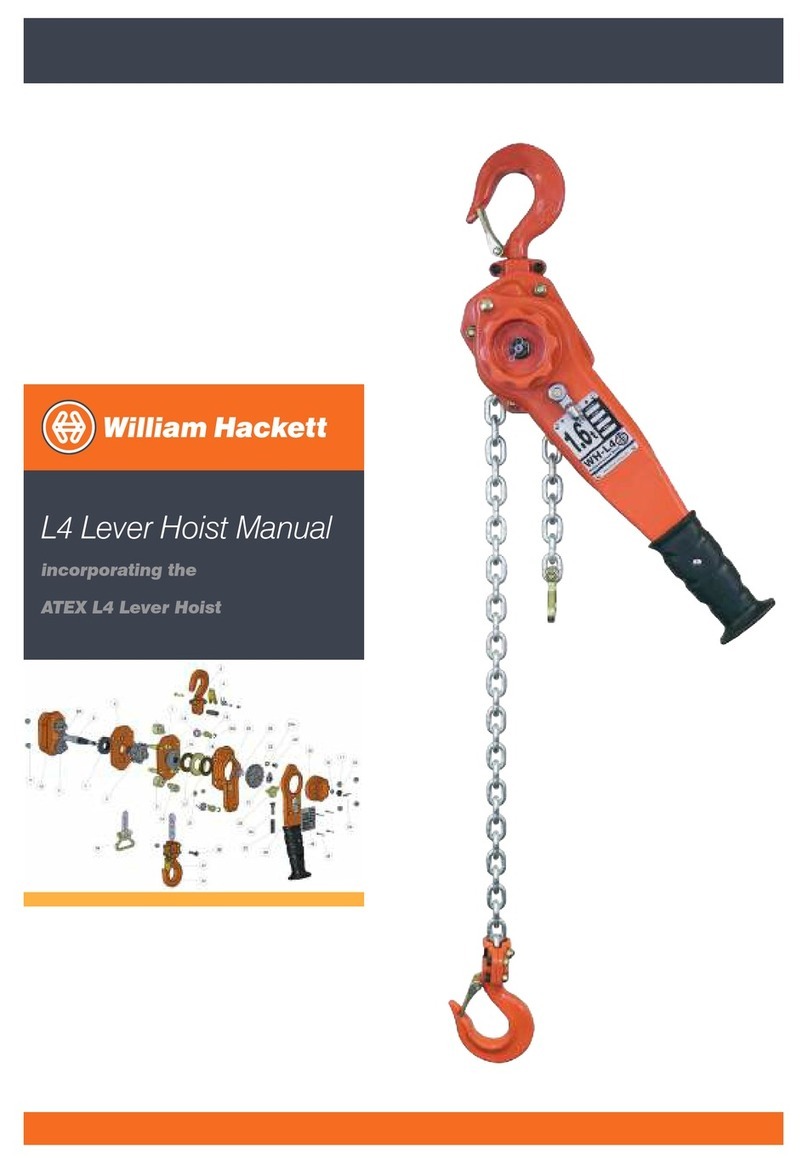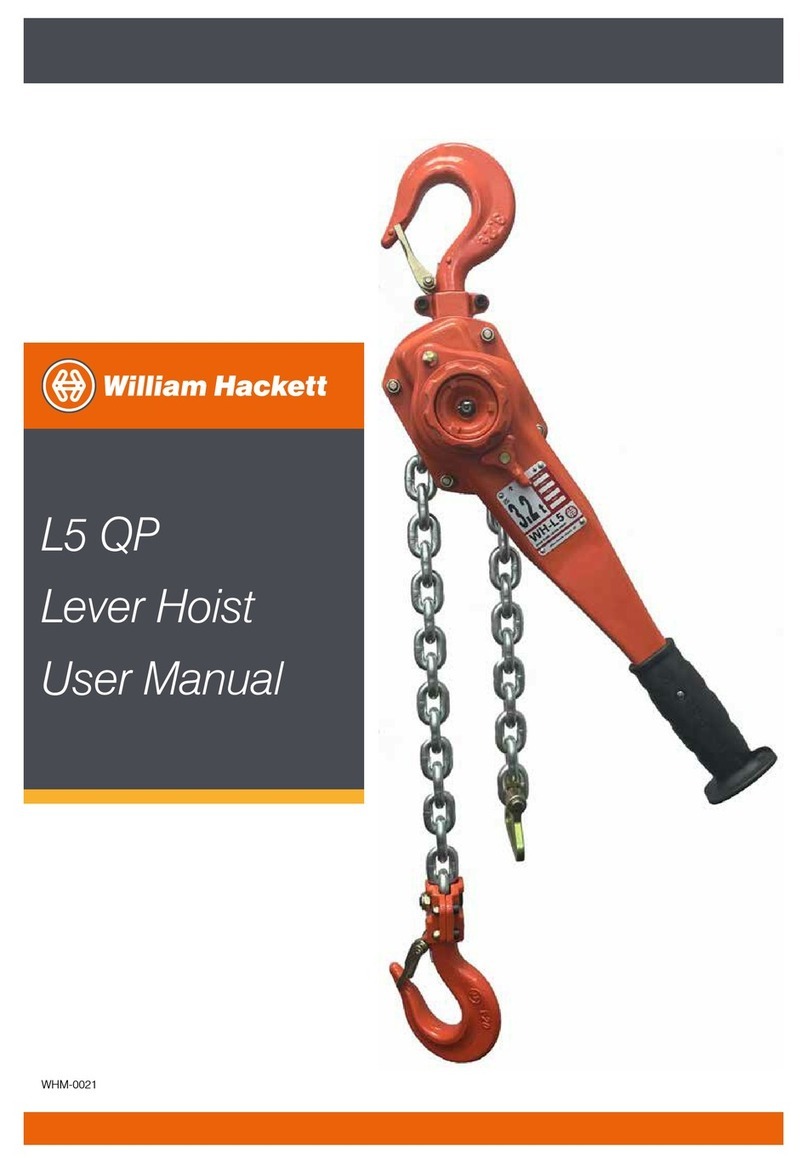
6. Operative training
6.1 All personnel involved in using lifting equipment in any
of its many forms must be provided with suitable training.
This is a specific requirement highlighted in the Health &
Safety at Work etc. Act 1974 and ancillary legislation and
is of particular concern given the risk to individuals and
equipment due to incorrect use.
7. Further information and guidance
7.1 Duty holders and actual users of lifting equipment,
including chain blocks and associated components can
obtain more detailed information and guidance on safe
use and compliance with statutory requirements from the
following publications (or later editions or replacements
of those publications):-
7.1.1 HSE Publication L22 (2014) Safe Use of Work Equipment.
7.1.2 HSE Publication L113 (2014) Safe Use of Lifting
Equipment.
7.1.3 HSE Publication INDG422 (2008) Thorough Examination
of Lifting Equipment.
7.1.4 HSE Publication L23 (2004) Manual Handling.
7.1.5 HSE Publication L25 (2005) Personal Protective
Equipment at Work.
7.2 For further information or other technical support about
the use of William Hackett chain blocks, the user should
contact the distributor or William Hackett.
4. Inspection, maintenance & discard criteria
4.1 Lifting equipment, including chain blocks, should be
thoroughly examined before first use and at periodic
intervals in accordance with statutory requirements (i.e.
the Lifting Operations and Lifting Equipment Regulations
1998).
4.2 Only competent persons should carry out the
inspection, examination, maintenance and repair of
lifting equipment, including William Hackett C4 chain
blocks.
4.3 The user should inspect the chain block before each
period of use and prior to placing the block back into
storage.
4.4 The identification and SWL information must be clearly
visible on the block label accompanied by the CE mark .
4.5 The load and hand chains should be checked for nicks,
gouges, weld splatter or heat discoloration all of which
are quarantine and potential discard criteria.
4.6 Hooks should be checked for nicks or gouges and for
free rotation.
4.7 Safety catches fitted to hooks must operate freely.
4.8 Only original William Hackett components should
be used to repair a William Hackett chain block. If an
alternative manufacturer’s components have to be
used, then a Certificate of Thorough Examination and
Test must be issued with the goods and the original
Declaration of Conformity must be retained to provide
the required level of traceability.
5. Storing and handling chain blocks
5.1 Never return damaged or contaminated chain block
to storage. The equipment should be dry, clean and
protected from corrosion.
5.2 Store chain blocks on a rack and not lying on the
ground. The storage area should be dry, clean and free
from contaminates which could harm the equipment.
5.3 Do not drag a chain block but use a pallet or other
container to move the equipment from one location to
another.
5.4 The handling of chain block and associated equipment
should have regard to statutory requirements, risk
assessments and method statements for manual
handling operations.
William Hackett Lifting Products Limited
Oak Drive, Lionheart Enterprise Park, Alnwick NE66 2EU
t: 01665 604200 f: 01665 604204
William Hackett Chain Products Limited
Maypole Fields, Cradley, Halesowen, West Midlands B63 2QE
t: 01384 569431 f: 01384 639157























